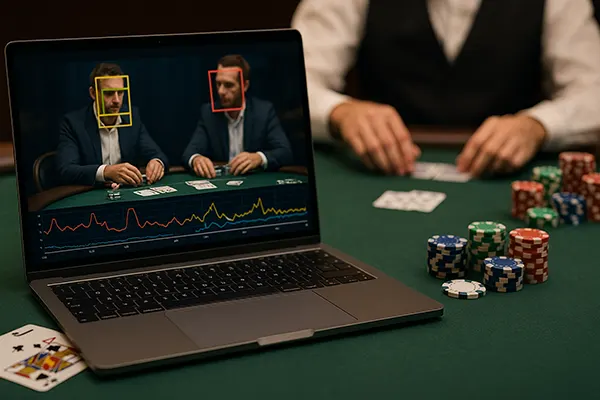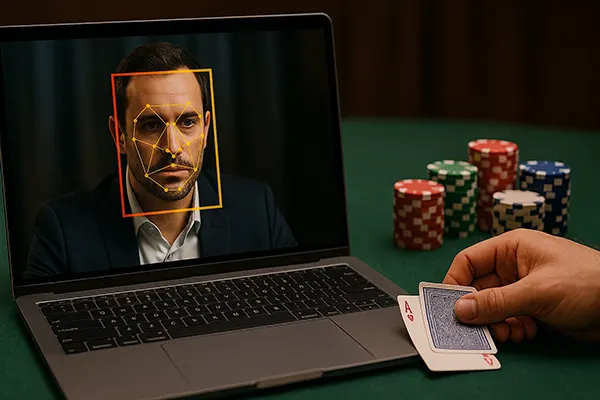
Video Analytics: How Modern Software Enhances Blackjack and Poker Performance
In 2025, video analytics has evolved into an indispensable tool for players aiming to refine their skills in blackjack and poker. By leveraging advanced algorithms, real-time tracking, and data-driven insights, these technologies allow players to analyse their moves, identify mistakes, and apply targeted improvements. The combination of AI-based video analysis and behavioural tracking has transformed how both professionals and enthusiasts approach their training and decision-making in competitive card games.
Advancements in Video Analytics Technology
The latest generation of video analytics software uses AI-powered recognition systems to detect and interpret player actions with exceptional precision. These systems can identify card handling patterns, betting behaviours, and even subtle non-verbal cues that might influence decision-making. The software is capable of processing live streams from multiple angles, ensuring every move is captured and evaluated.
Integration with cloud-based storage enables secure archiving of gameplay sessions for long-term analysis. Players can revisit past sessions to review their strategic evolution, assess recurring mistakes, and adapt their approach. This archival capability is particularly valuable for competitive players preparing for high-stakes tournaments.
Moreover, recent developments in edge computing allow for real-time processing directly on devices, reducing latency and ensuring instant feedback. This is critical in environments where split-second decision-making defines the outcome, such as live blackjack tables or fast-paced poker games.
Practical Applications for Players
In blackjack, video analytics can highlight deviations from optimal play strategies by cross-referencing recorded moves with established probability models. This enables players to adjust their approach based on quantifiable data rather than intuition alone. For poker, analytics tools can track hand history and identify patterns in betting that may reveal tendencies or predict opponents’ strategies.
These insights are particularly valuable for online players, where subtle behavioural cues are harder to detect. By analysing digital betting patterns and response times, software can uncover exploitable trends and help players remain unpredictable. Even live players benefit, as facial expression and posture analysis becomes more accurate with each software update.
Beyond individual improvement, video analytics is now used in collaborative environments where teams of players share data, compare strategies, and jointly develop counterplays. This collective intelligence approach has been gaining popularity among professional poker stables and blackjack training communities.
Impact on Competitive Play
The integration of video analytics in competitive settings has redefined preparation standards. Professional players are now expected to study not only their own gameplay but also their opponents’ tendencies using high-definition video breakdowns. This has led to an arms race in analytical sophistication, with top teams investing heavily in proprietary software.
In blackjack tournaments, video analytics assists in recognising shifts in dealer behaviour or procedural patterns that could influence outcomes. In poker, high-level players use it to dissect hours of footage to predict betting sequences, table image perception, and even micro-expressions under pressure.
Such detailed preparation has raised the skill ceiling significantly. While luck remains a factor, the margin between victory and defeat increasingly depends on the depth and quality of analytical preparation.
Ethical and Regulatory Considerations
The use of advanced video analytics has sparked discussions on fairness and compliance with gaming regulations. While most training applications are legal, applying such tools during live play in regulated venues can breach rules and result in penalties. Consequently, professional players must remain aware of the boundaries defined by tournament organisers and gaming authorities.
Regulatory bodies have started to publish clearer guidelines on acceptable use of technology for training and competitive analysis. These include restrictions on live-feed analysis during events and stipulations regarding data privacy when recording other players. These measures aim to ensure that analytical advantages do not undermine the integrity of the game.
For ethical players, adherence to these guidelines not only prevents sanctions but also contributes to a healthier competitive environment. Respect for fair play remains central to the sustainability and legitimacy of competitive blackjack and poker.

Future Developments in Video Analytics for Card Games
Looking ahead, the next wave of innovation in video analytics is expected to integrate biometric data with visual tracking. This could include monitoring heart rate, pupil dilation, and micro-sweating patterns to create even more accurate behavioural profiles. While such tools are still in experimental stages, they are likely to become commercially available within the next few years.
Another area of growth is predictive modelling based on aggregated gameplay data. By analysing thousands of hands from both live and online environments, software can anticipate future scenarios and suggest optimised strategies in real time. This would offer players a near-coaching experience during training sessions.
Advances in augmented reality (AR) are also set to influence training methods. AR overlays could project suggested moves, probability charts, or opponent profiling data directly onto a player’s field of vision, making practice sessions more interactive and immersive while maintaining compliance with regulatory standards.
Integrating Video Analytics into Personal Training
For players looking to incorporate video analytics into their personal development, the process begins with selecting a reputable and compliant software provider. Factors such as ease of use, data security, and compatibility with recording equipment should guide the choice.
It is advisable to establish a structured review schedule, dedicating time after each session to analyse recorded gameplay. This discipline helps ensure that data insights translate into tangible skill improvements over time. Keeping detailed notes and tracking progress across multiple sessions can also reveal subtle gains that might otherwise go unnoticed.
Lastly, players should remain open to feedback from peers or coaches who can provide fresh perspectives on the data. Combining personal review with external analysis often leads to deeper strategic insights and more robust gameplay improvements.



